12 Most Unique National Parks In Europe
In terms of mountainous destinations, there are very few places that compete with Europe. The rural areas of almost every European country are blanketed with lush green forest interspersed with picture-perfect lakes and the occasional isolated 14th-century church. But is that it? There are no swaths of tropical forest like Africa’s Congo or the Amazon in South America. There are no epic arid environments like Oceania’s outback or Asia’s spectacular Gobi desert and barely any grassland ecosystems like the prairies of North America. Upon realising this, as a European, I felt duty bound to scour my ostensibly dull homeland for its most fascinating and unique elements and what I found was quite incredible! In this article, we’ll explore every corner of the European continent including 12 of its most interesting national parks and discover if Europe is indeed tedious OR one of the most diverse continents on earth.


Left: Red Deer Stag in De Hoge Veluwe National Park / Shutterstock & Right: Brown Bears in Oulanka National Park / Shutterstock
Contents
- Triglav National Park, Slovenia
- Prielbrusye National Park, Russia
- Thingvellir National Park, Iceland
- Abruzzo National Park, Italy
- Oleshky Sands National Park, Ukraine
- Białowieża National Park, Poland/Belarus
- Oulanka National Park, Finland
- Jostedalsbreen National Park, Norway
- Cairngorms National Park, UK
- De Hoge Veluwe National Park, Netherlands
- Doñana National Park, Spain
- Zakynthos National Marine Park, Greece
Triglav National Park, Slovenia
The defining feature of Europe’s geography is, of course, its mountains and no range is more iconic than the Alps. Some of the most well-known peaks include Mont Blanc in France, the Matterhorn, which sits on Switzerland’s southern border and the dark grey granite peaks of the Italian Dolomites. One of the smaller subranges on the southeastern-most tip of the Alps is known as the Julian Alps, whose highest peak is Triglav after which Slovenia’s Triglav National Park is named. Aside from the mountainous terrain, one of the park’s most notable features is its crystal-clear emerald green waterways. The River Soča winds its way through a series of narrow gorges and is a renowned location for both fishing and white water sports such as kayaking.
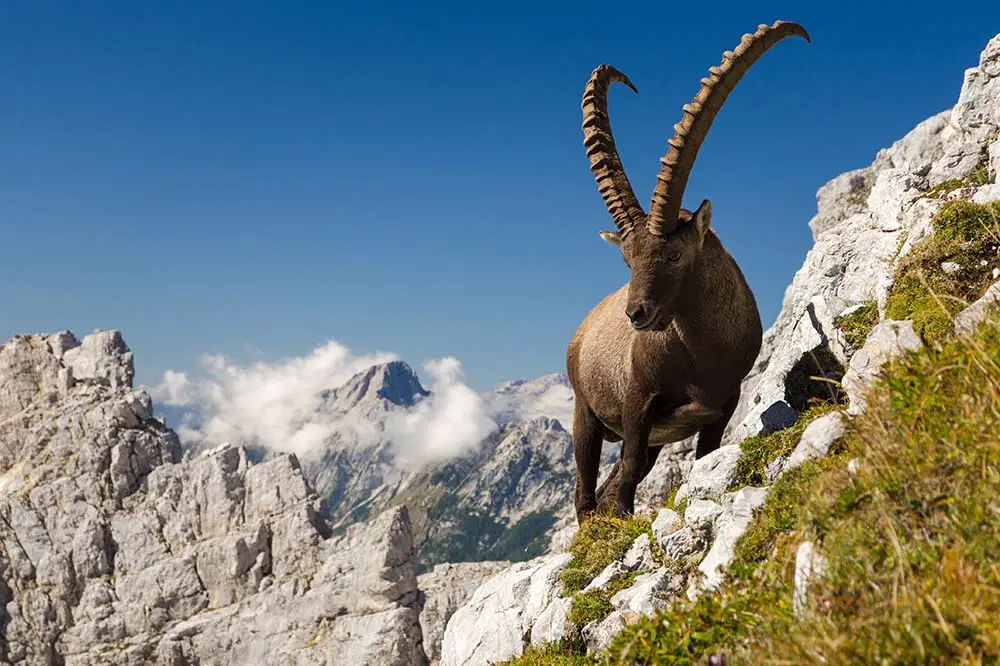

Left: Ibex in Triglav National Park / Shutterstock & Right: Walkway in Triglav National Park / Shutterstock
The river exits the park on its western boundary flowing into Italy where it terminates in the Mediterranean. Surprisingly, Triglav is Slovenia’s only national park but is part of one of the country’s 4 UNESCO Biosphere Reserves, a concept we’ll explore later on, and features several picturesque lakes. Although Lake Bohinj is the largest permanent lake in the country, it is overshadowed by a much more famous body of water found to the east. Just a few kilometres outside of the park boundary sits one of the most famous lakes in all of Europe, Lake Bled, known for its church-topped island and Bled Castle, which is perched on a cliff overlooking the northern banks.
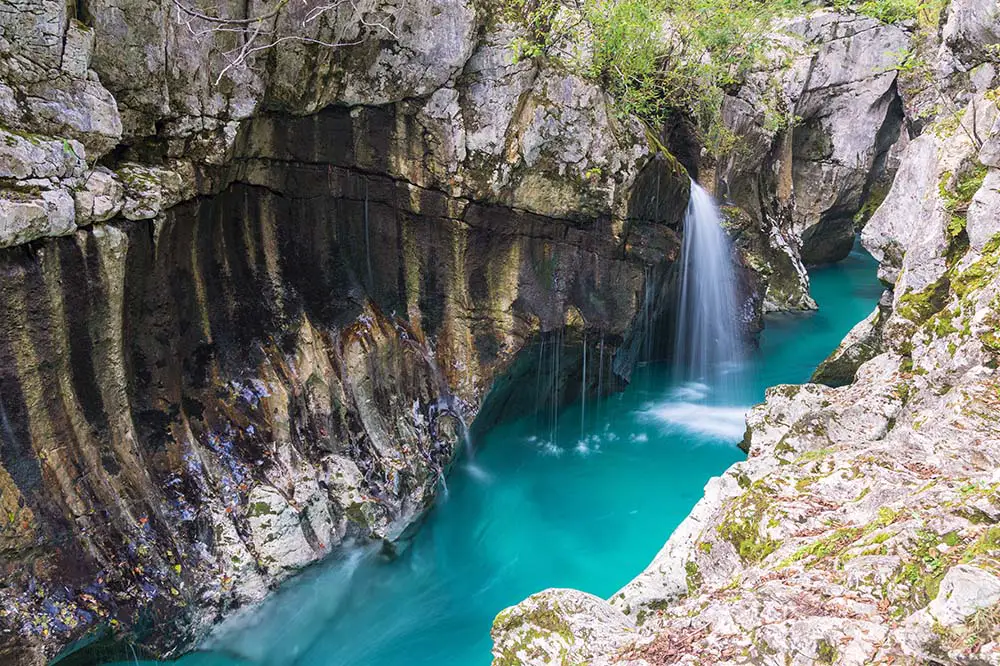
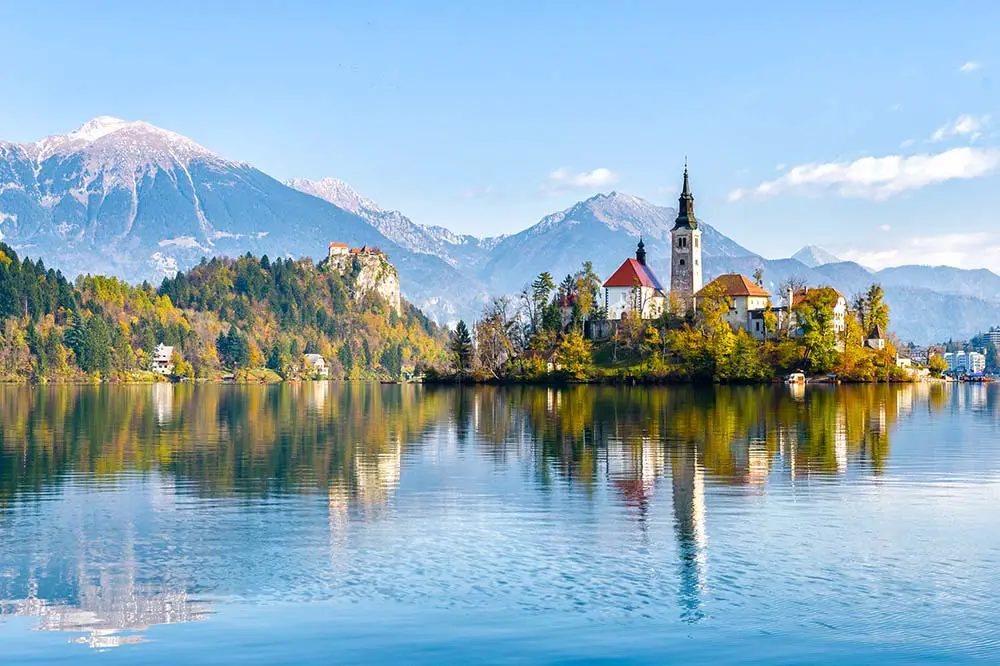
Left: River Soca / Shutterstock & Right: Lake Bled / Shutterstock
Prielbrusye National Park, Russia
While the Alps is certainly the most well-known range in Europe, it doesn’t contain the continent’s highest peak. This accolade goes to Mount Elbrus of the Caucasus mountains, which sits not only on the border of Russia and Georgia but that of Europe and Asia. Elbrus is contained within Prielbrusye, which translates to Elbrus region and is one of Russia’s 64 National Parks. Elbrus, a dormant volcano that formed more than 2.5 million years ago, stands at 5,642 m / 18,510 ft making it the highest stratovolcano in Eurasia. It is also known for its prominence and towers over the surrounding mountains. Elbrus is home to over 20 glaciers and features two cones, the smallest of which was first summited way back in 1829 and the taller of the two in 1874.

The surrounding forests and meadows are home to an impressive collection of animal species; some of the smaller mammals include the Caucasus ground squirrel, which is endemic to the North Caucasus and the least weasel, which is always fun to mention! Larger mammals include wild boars, which can be found in groups of up to 15, and the brown bear, of which there are several subspecies found throughout Europe. Amphibians include the common newt, a type of salamander and several species of frog including the European tree frog.


Left: Least Weasel / Shutterstock & Right: Wild Boars with Young / Shutterstock
Thingvellir National Park, Iceland
Another country found on the border of two continents, although not as obviously, is Iceland, which sits on the boundary of the North American and Eurasian plates. To truly appreciate what is on display at our next national park, we need to take a quick look at plate tectonics. As plates separate, heat generated by the earth’s mantle contorts their edges upwards, creating a mountainous ridge line. In fact, it may interest you to know that Iceland is part of the largest mountain range in the world, you just can’t see most of it. As these plates continue to separate, this ridgeline cracks and magma spills onto the seafloor where it is cooled by the ocean, creating new oceanic crust; this map shows the newest crust present at the plate boundaries and older crust further away. Occasionally these ridges rise high enough to break the surface, as is the case with Iceland.

As such, one of the best places to see these forces in action is Thingvellir National Park, which sits just 40 km from the capital, Reykjavík, roughly 70 km from Vatnsleysustrandarhreppur and a mere 45 km from Gullberastaðaselsbringur. This park is also a UNESCO World Heritage Site but instead of being inscribed for its geological features is a cultural site representing the home of the Icelandic parliament from 930 to 1798. Thingvellir is part of Iceland’s Golden Circle, a popular tourist route that also includes geysers, volcanic craters, and epic waterfalls.
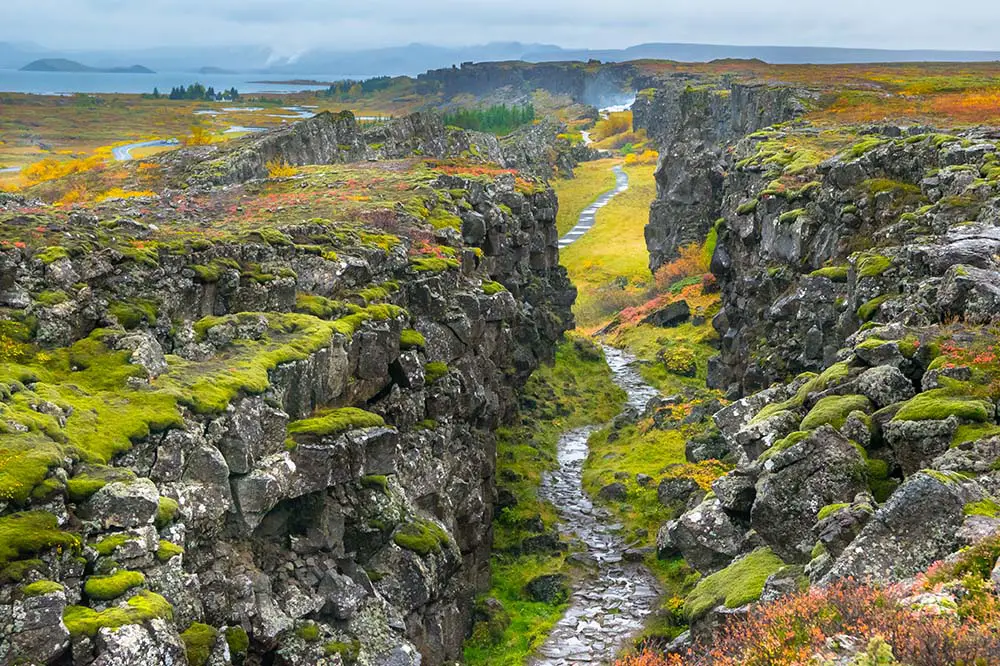
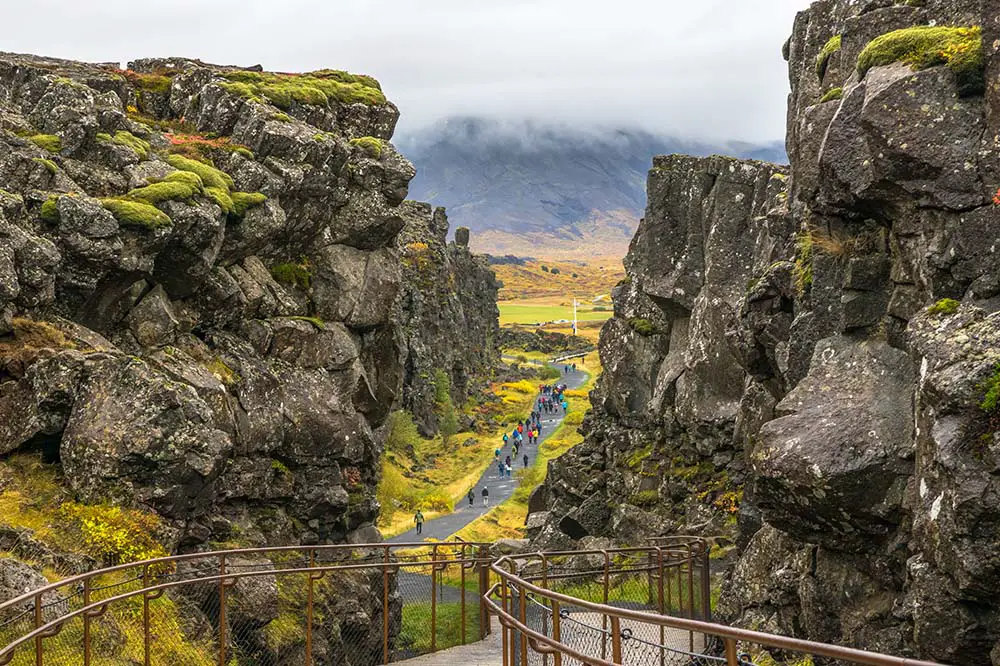
Left & Right: Thingvellir National Park / Shutterstock
Abruzzo National Park, Italy
If we follow the Eurasian plate through the Atlantic and into the Mediterranean we end up in Italy where some of Europe’s most famous and active volcanoes exist. Mount Etna is the tallest active volcano on the continent, and second only to Elbrus if we include dormant volcanoes. It is part of Etna National Park but is not why we’ve come to Italy. 450 km due north is the central Apennines, which are home to one of the rarest bears in the world and Abruzzo, Lazio and Molise National Park. The Marsican or Apennine bear is a subspecies of brown bear and with most of the 50 individuals remaining in the wild being found in the park, is the pride and joy of this Italian paradise. The park was created in 1922 in order to protect this subspecies and celebrates its centennial anniversary this year. Males of the species weigh around 220 kg (485 lbs) and spend most of their time munching on roots, fruit and berries but will take on medium-sized mammals such as sheep.

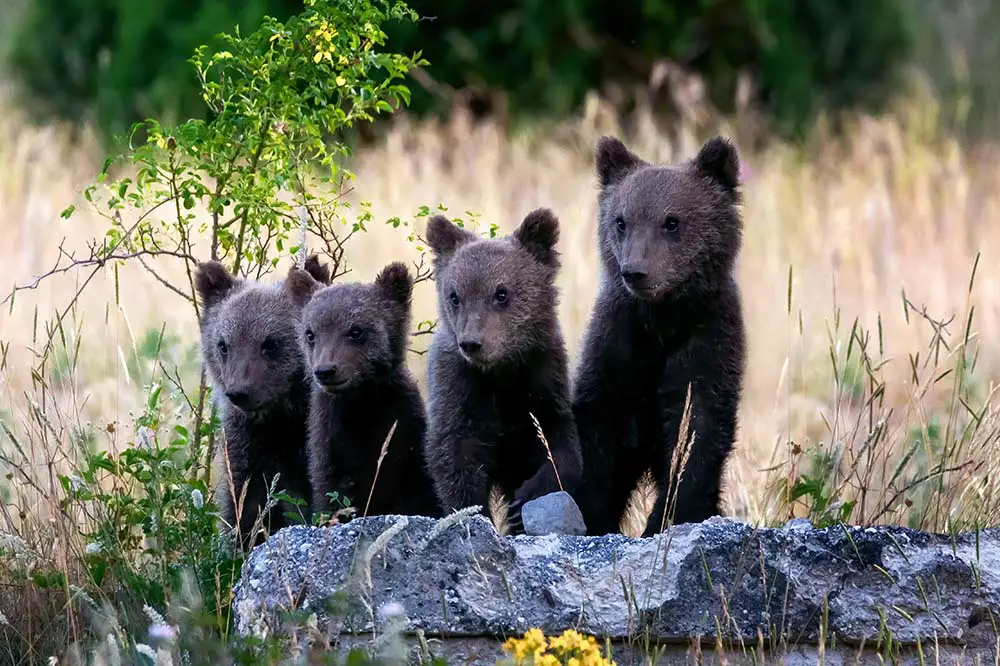
Left: Marsican Bear / Shutterstock & Right: Marsican Bear Cubs / Shutterstock
Other predators include the Italian wolf, a subspecies of grey wolf whose range covers almost all of mainland Italy. Like the Marsican bear, their conservation status is currently set to threatened, highlighting the importance of national parks such as Abruzzo. One of the most beautiful plant species found within the park is the Yellow Lady’s Slipper orchid. The slipper part of the flower acts as a trap for insects such as bees; once lured into the sweet-smelling trap, to exit, the bee must brush past the female part of the flower, depositing any pollen from a previous plant before reaching the male part of the flower where it collects pollen from the current plant and the cycle is then repeated. This process is known as pollination.


Left: Italian Wolf / Shutterstock & Right: Yellow Lady’s Slipper Orchid / Shutterstock
Oleshky Sands National Park, Ukraine
Looking at the other mountain ranges in Europe, the Carpathians deserve to be covered, however, having already explored a few of these ranges, I dug a little deeper and found the oldest steppe reserve in the world and a desert national park under 60km from each other in the south of Ukraine. At first glance, Askania-Nova seems like something that should be classed as a zoo or a safari park but, in fact, is a UNESCO Biosphere Reserve. These areas are similar to national parks but are less heavily restricted and promote learning opportunities, the conservation of biodiversity and sustainable development. Askania-Nova was established way back in the late 19th century and is located at the westernmost tip of the Eurasian steppe just north of the Crimean peninsula. Fauna from similar environments was brought in from all over the world and still today houses animals such as zebras, wildebeest and the Przewalski’s horse, which is critically endangered and in the wild is found only in Mongolia.
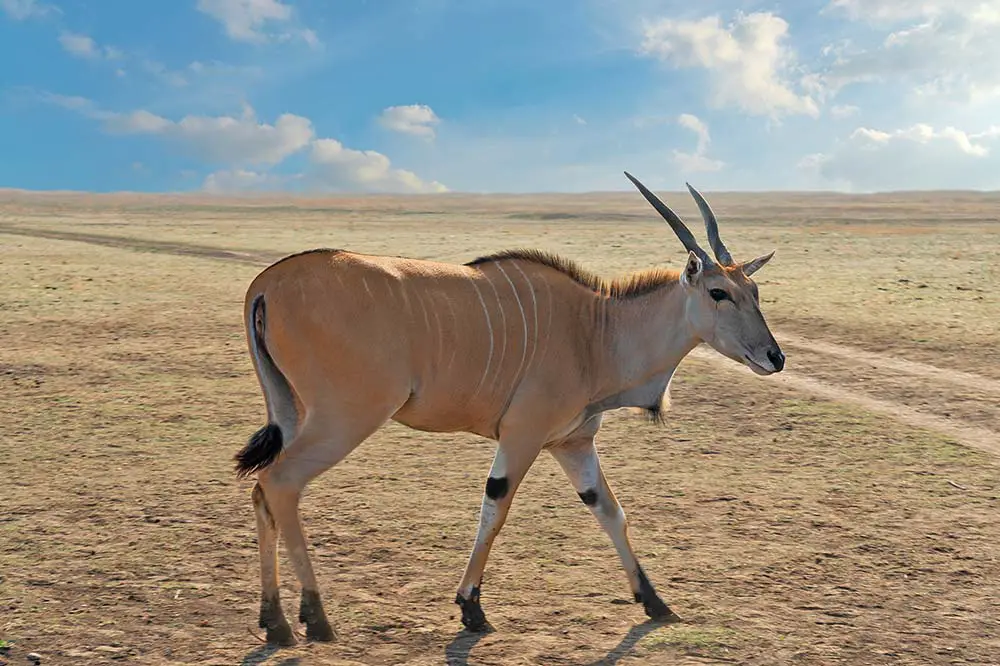
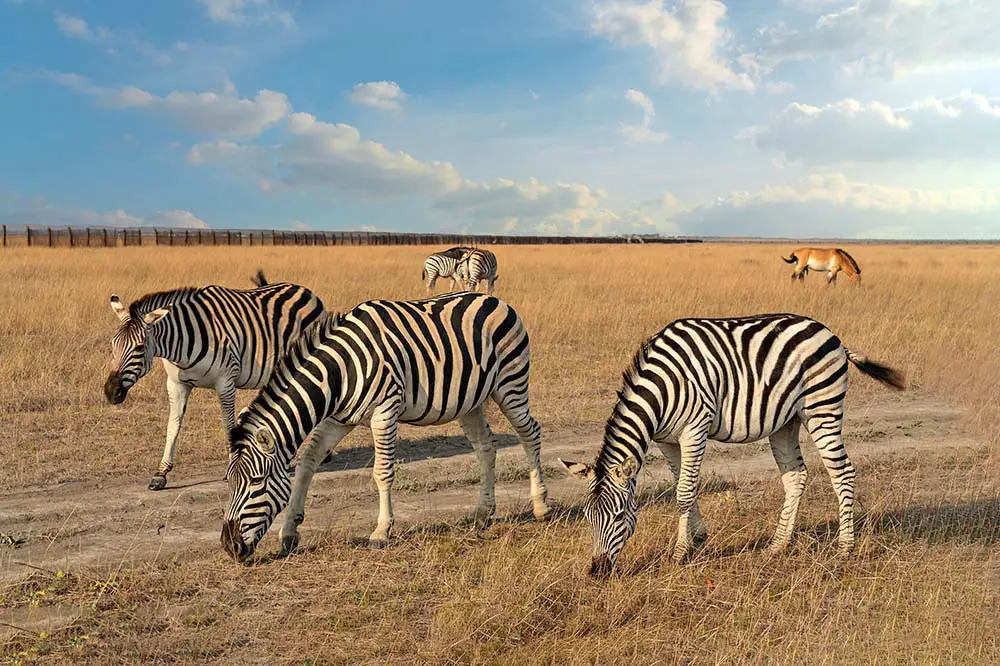
Left: Antelope at Askania-Nova / Shutterstock & Right: Zebra at Askania-Nova / Shutterstock
Just 60 km (37 mi) west of Askania-Nova sits one of the most unique national parks not just in Ukraine but the entire continent. Oleshky Sands National Nature Park is often cited as either the first or second largest desert in Europe measuring up to 15 km (9.3 mi) in width. It is thought to have formed at the end of the last ice age and is now contained by the pine forests that have been planted around it. This environment is home to several species of reptile including the Caspian whipsnake and the Steppe-runner, a species of lizard found as far east as China.


Left: Caspian whipsnake / Shutterstock & Right: Oleshky Sands / Shutterstock
Białowieża National Park, Poland/Belarus
Our journey into the wondrous world of European wildlife continues just north of Ukraine in the 9th largest country in Europe. Like Ukraine, Poland contains around 10% of the Carpathian Mountain Range but most of the country is relatively flat with areas of temperate forest. Białowieża National Park is located on the border of Poland and Belarus and is home to one of the most impressive creatures on the continent, the European Bison. These animals are from the same genus as the American bison, who tend to be a little heavier but fractionally shorter than their European counterparts, who have longer legs. These creatures became extinct during the first World War but were reestablished from zoo populations into several areas including and especially Białowieża forest where the largest population now resides.


Left & Right: Bison at Białowieża / Shutterstock
The entire forest was declared a UNESCO World Heritage Site in 1979, the criteria for which not only mentions the population of bison but other animals such as wolves and lynx as well as the forest itself, which contains extensive old-growth forest and is highly valued for its diversity of fungi as well as being home to many species of moss and lichen. Poland is also home to my favourite building in all of Europe, Malbork Castle, which was built by the Teutonic order during the 13th century and features eye-catching red brick walls.

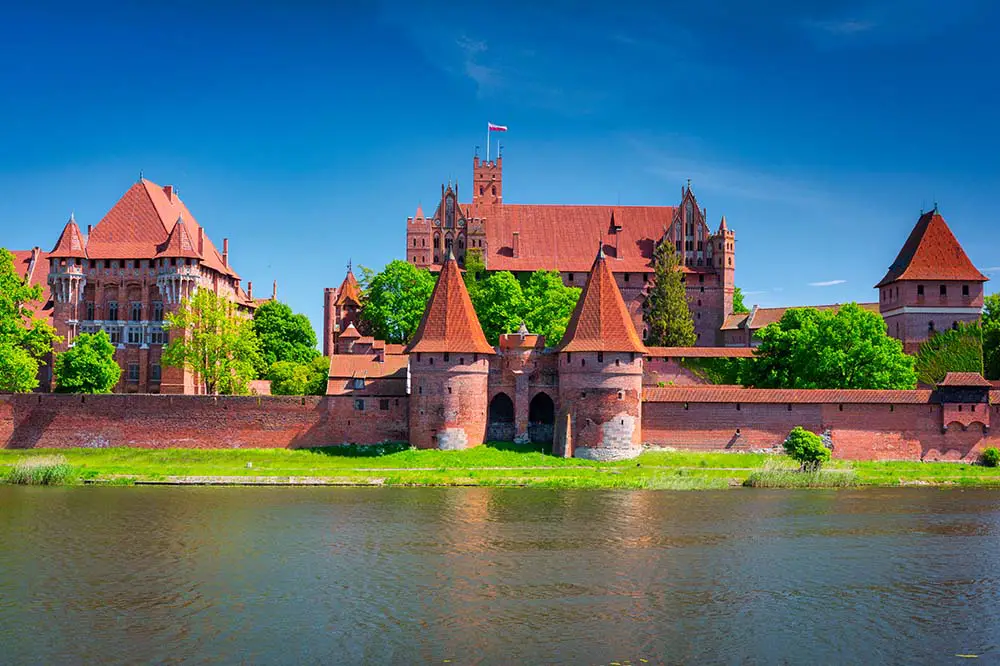
Left: Białowieża Forest / Shutterstock & Right: Malbork Castle / Shutterstock
Oulanka National Park, Finland
The Baltic Sea shares its coastline with both Poland and our next stop further north, which boasts arguably the most spectacular wildlife of any European country. Or at the very least, tied with Sweden and Norway! Finland is unique from all other countries we’ve touched on so far thanks to its ecological make-up being almost entirely boreal forest. Oulanka National Park is located in the heart of the boreal zone, close to the Arctic Circle and the border with Russia and is one of Finland’s 40+ national parks. This kind of habitat plays host to animals that don’t venture further south such as moose, who do not fare well in warmer climates, as well as wolverines, the largest of the terrestrial mustelids.


Left: Eurasian Brown Bear / Shutterstock & Right: Wolverine / Shutterstock
Other animals include the lynx who thrive in Finland’s snowy wilderness alongside reindeer whose antlers are grown by both sexes, unlike most other deer species which are grown only by males. The birds of the Finnish boreal forests include the northern hawk owl, which preys on small mammals such as shrews and snowshoe hares as well as game birds such as the black grouse, which comes from the same family as the capercaillie, which is also present in Finland. A 2019 study by the Natural Resources Institute Finland estimated there to be just over 2,000 brown bears within the country’s borders, which is significantly more than their dwindling wolf population which is now under 200 individuals.

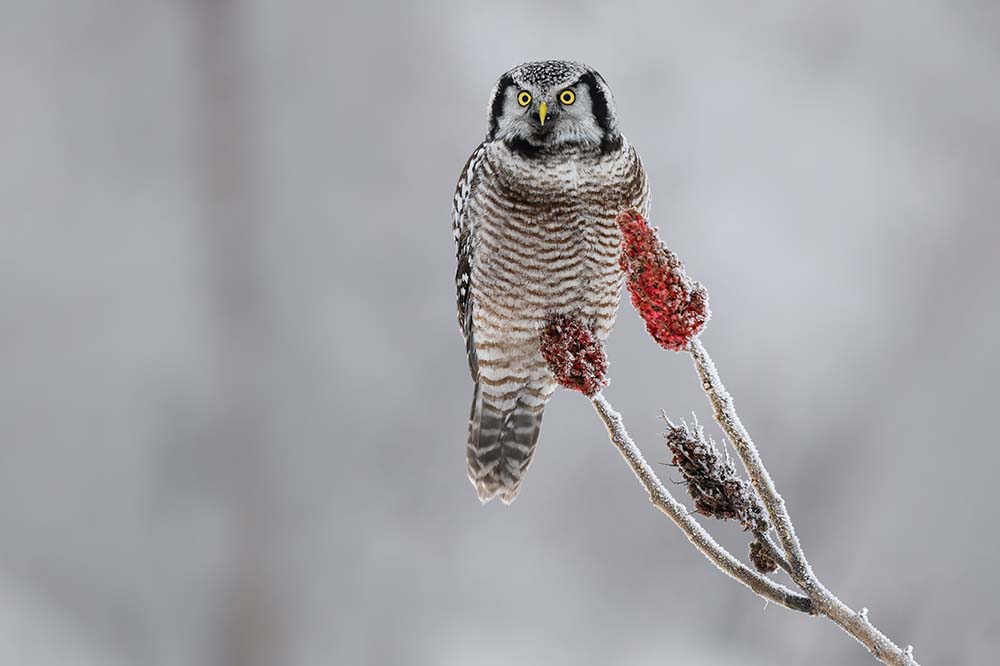
Left: Eurasian Lynx / Shutterstock & Right: Northern Hawk Owl / Shutterstock
Jostedalsbreen National Park, Norway
For nature enthusiasts, there are few areas of the world that compete with Scandinavia and our next stop features another of Europe’s epic mountain ranges, which runs down the western side of the Scandinavian peninsula and is named simply the Scandinavian Mountains. One of the most well-known features of this area is the gigantic glacier-cut fjords that start far inland and lead into the Norwegian Sea. The most well-known and photographed is Geirangerfjord, which is 15 km long, and at parts 1.5 km wide, often playing host to large cruise ships, which turn around with ease in its ice-cold waters.

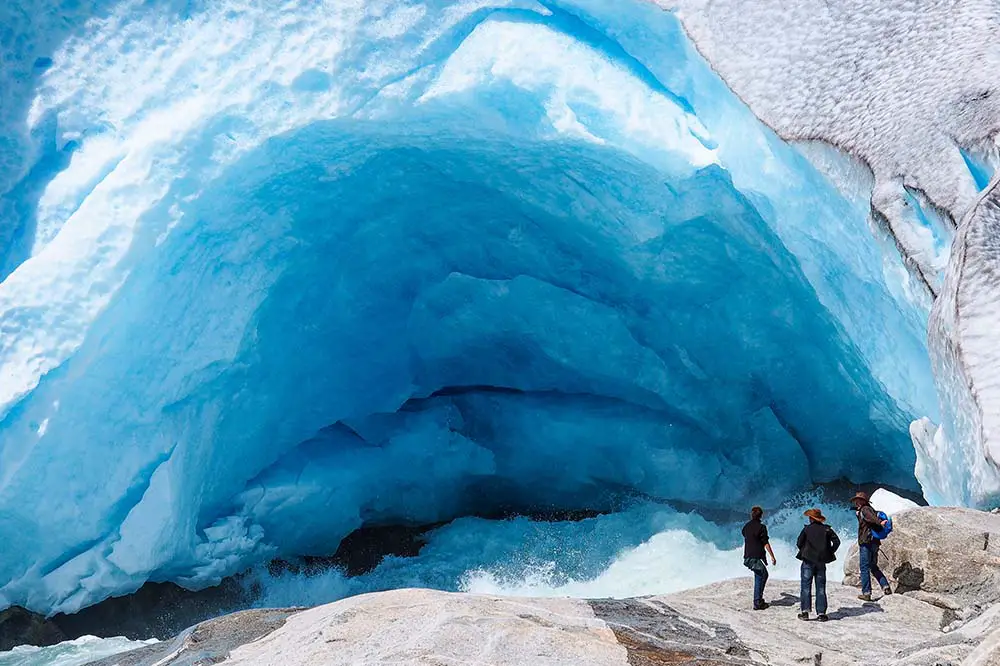
Left: Geirangerfjord / Shutterstock & Right: Jostedalsbreen / Shutterstock
The most inland point of Geirangerfjord is less than 50 km from the centre of the largest glacier in mainland Europe, Jostedalsbreen, which makes up half of the surrounding national park. At its thickest, the Jostedalsbreen glacier is 570 m and drops from an elevation of almost 2000 m (1957 m ) to just 60. The total volume is 73 km², which according to Visit Norway’s website is enough to fill 300 billion bathtubs of water! Norway is quite unique in its geography with several other famous sites found further south including Trolltunga, a famous rocky outcrop that extends precariously over the 700 m drop below and Pulpit Rock, which is again further south and looks ever so slightly less precarious!
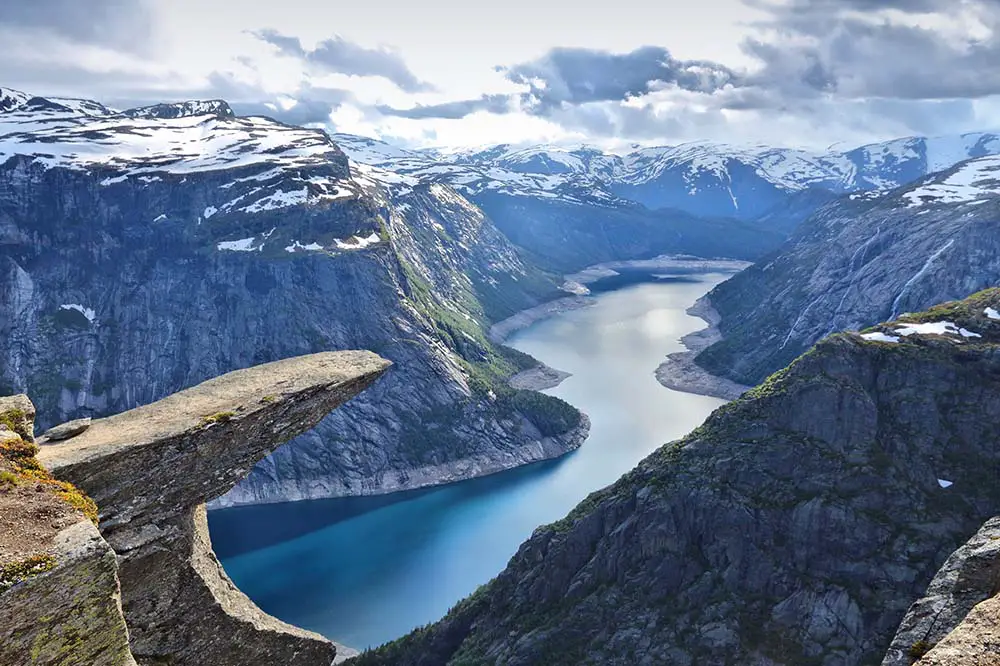
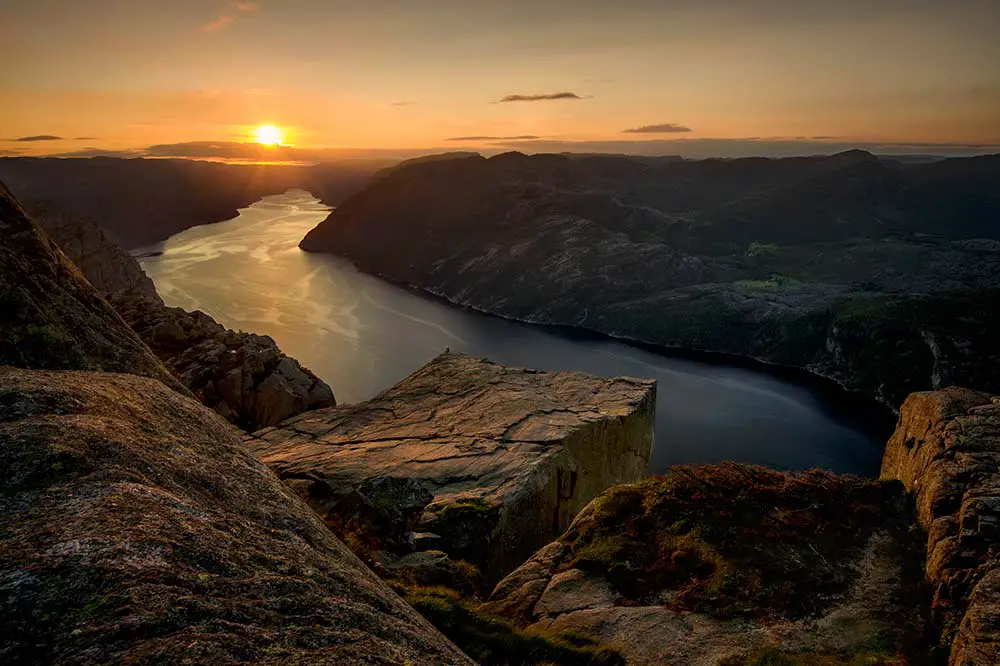
Left: Trulltunga / Shutterstock & Right: Pulpit Rock / Shutterstock
Cairngorms National Park, UK
The freezing North Sea separates Scandinavia from the United Kingdom, specifically the coastline of Scotland which is home to the highest peak in the U.K. Ben Nevis and its only population of reindeer! At 4,528 km² / 1,748 sq mi, Cairngorms National Park is the largest in the U.K. and is named after the Cairngorms Mountain Range, the highest in the U.K. In addition to the mountainous ecosystems, there are several habitats that make the Cairngorms an incredibly unique location; Moorlands are maintained by the park authority through burning and in addition to displaying wonderful blooms of purple heather in the autumn months, are home to populations of grouse and other species such as blue hares, also known as the mountain hare.


Left: Scottish Moorlands / Shutterstock & Right: Reindeer / Shutterstock
Peatlands form in very wet conditions and are named after their soil known as peat. These ecosystems are fragile due to their slow growth but are home to many species of colourful mosses. Finally, the woodlands and forests of the Cairngorms, known as Caledonian Forest, are home to tracts of Scots pine, birch and aspen trees. Among many other creatures, the Scottish wildcat can be found roaming the park alongside the beautiful European pine marten, which can weigh 1,800 g / 63.5 oz. Perhaps most surprisingly, the Cairngorms is home to the U.K’s only herd of reindeer. One of the most frequently asked questions on the park’s website is “can I cuddle the reindeer” to which the park rangers have gently pointed out that these animals enjoy their personal space and it is therefore advised not to cuddle the reindeer!
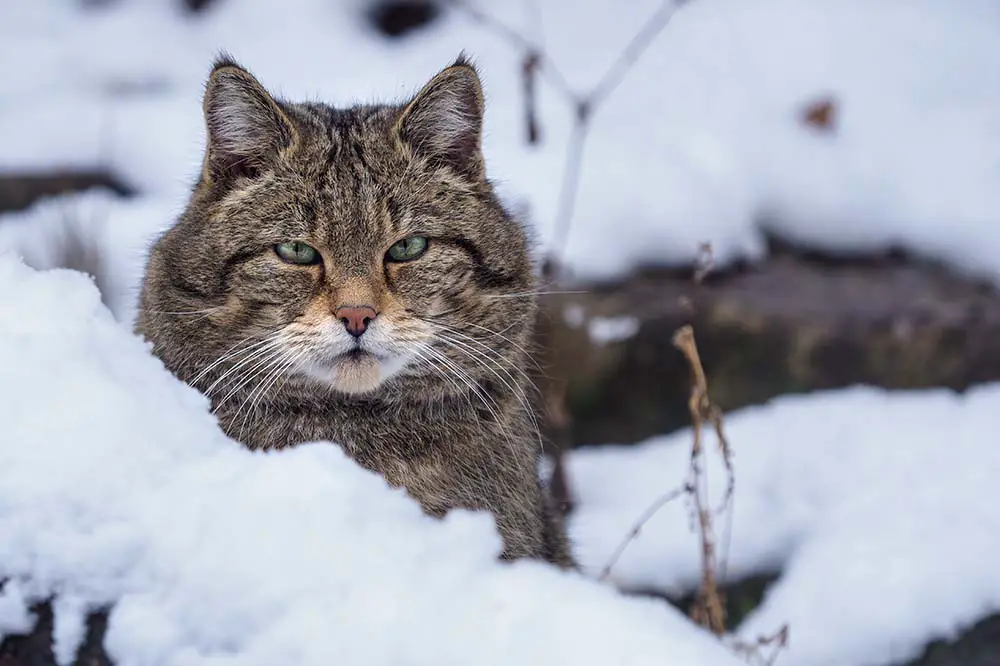
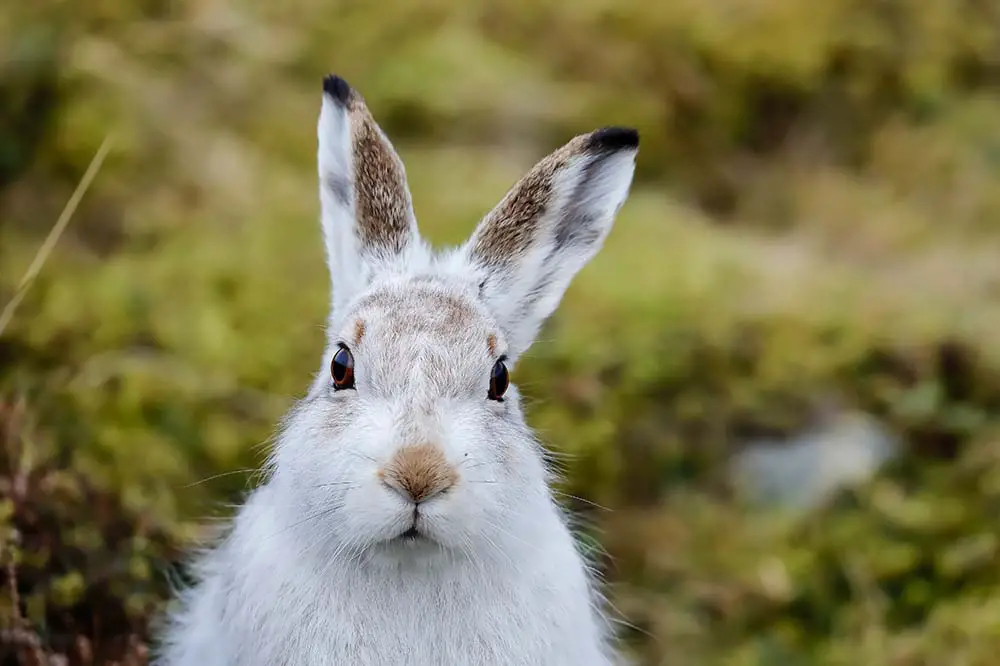
Left: European Wild Cat / Shutterstock & Right: Mountain Hare / Shutterstock
De Hoge Veluwe National Park, Netherlands
There is one more creature that the Cairngorms is famous for, the red deer, but we’ll save this species for our next stop, found 800 km back across the North Sea in the Netherlands. Veluwezoom National Park was established in 1931 and is the oldest national park in Holland. It is home to one of the best examples of heath, a shrubland habitat, similar to the moors of Scotland, dominated by species of heather, grasses and herbs. The nearby De Hoge Veluwe National Park, has very similar terrain, home to arid areas known as sand drifts, which mix with the heath and look particularly incredible at sunset.


Left: Deer in Veluwezoom / Shutterstock & Right: Sand drifts at De Hoge Veluwe / Shutterstock
Both parks host populations of red deer, which mate during the months of September and October, a period known as rutting reason. The male deer, known as stags, will compete for females by roaring and battling other stags by clashing antlers. Other impressive wildlife includes wild boars who will often graze alongside the deer. Most of the piglets are born in March and are much lighter in colour with white stripes that stretch along the length of their bodies. The sand lizard is one of the most interesting reptiles of the region; the males of the species are bright green in colour whereas the females are brown. They can be found in the sand drifts at De Hoge Veluwe.


Left: Squirrel / Shutterstock & Right: Wild Boar / Shutterstock
Doñana National Park, Spain
If you thought the landscape of the Netherlands was impressive, I’d like to introduce you to a country called Spain. The Pyrenees separate this Mediterranean country from its northern neighbour, France. However, its highest peak, Mulhacén is found in the Sierra Nevada range in the south of the country, which is also home to the Alhambra, a palace built during the 13th and 14th centuries during the rule of the Nasrid dynasty. It is one of a handful of UNESCO world heritage sites in southern Spain, which also includes an important wetland 360 km southwest.
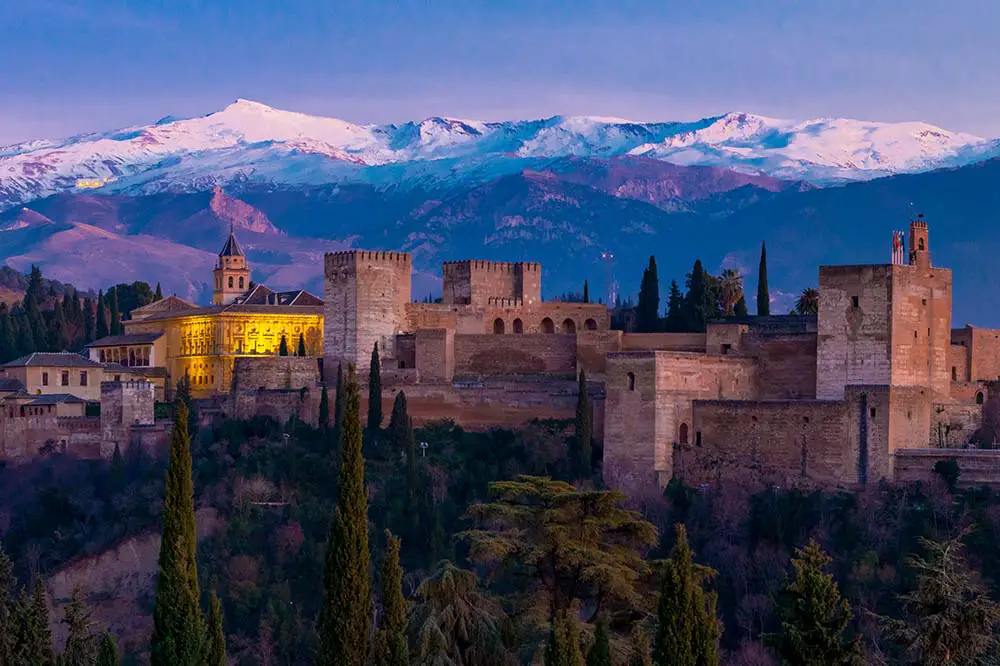
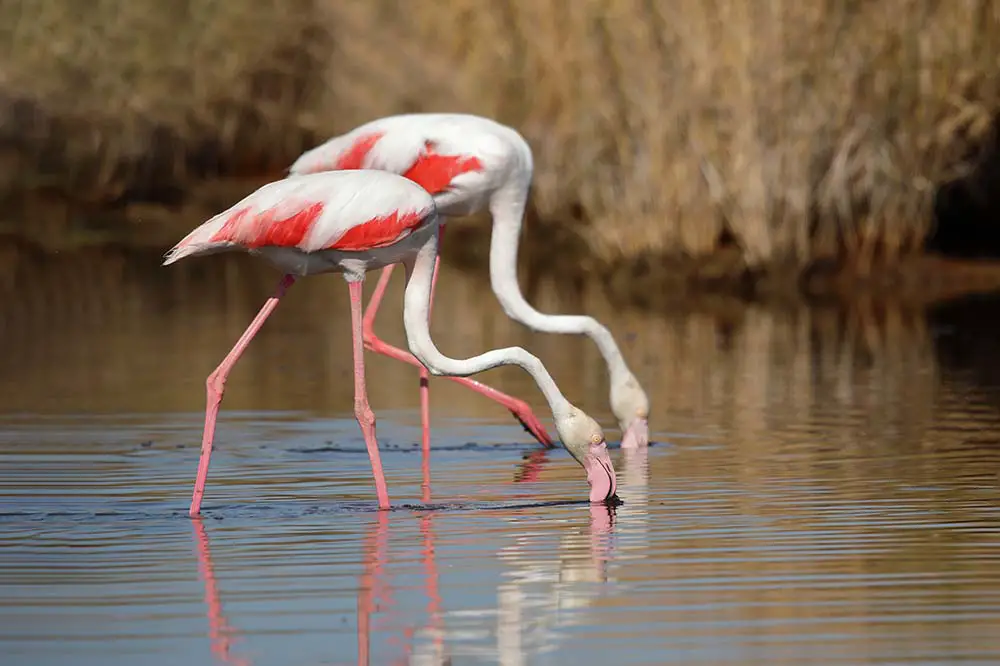
Left: The Alhamba / Shutterstock & Right: Greater Flamingos / Shutterstock
Doñana National Park was established in 1969 and is home to wild horses, deer, and more than 400 species of birds including and especially the greater flamingo. These social animals live in flocks of thousands of birds called colonies. They are filter feeders and get their pink colour from carotenoids in the algae they consume. Doñana also plays host to one of the two major populations of Iberian Lynx, an endangered wildcat found only in the south of Spain. The wetland is separated from the ocean by an extensive set of dunes, the national park includes these dunes and a 30 km stretch of Mediterranean coastline.


Left: Sand Dunes at Doñana / Shutterstock & Right: Iberian Lynx / Shutterstock
Zakynthos National Marine Park, Greece
This Mediterranean is one of the most revered and unique features in Europe and is shared by over 10 European countries including Greece. The territory of Greece includes thousands of islands dotted around the eastern part of the Mediterranean. Some of the most famous include Santorini or Thira in Greek with its bright white and blue painted buildings and Zakynthos, which is home to the towering white cliffs of Navagio Beach. On the other side of the island sits Zakynthos National Marine Park, which is one of the most unique national parks in all of Europe.
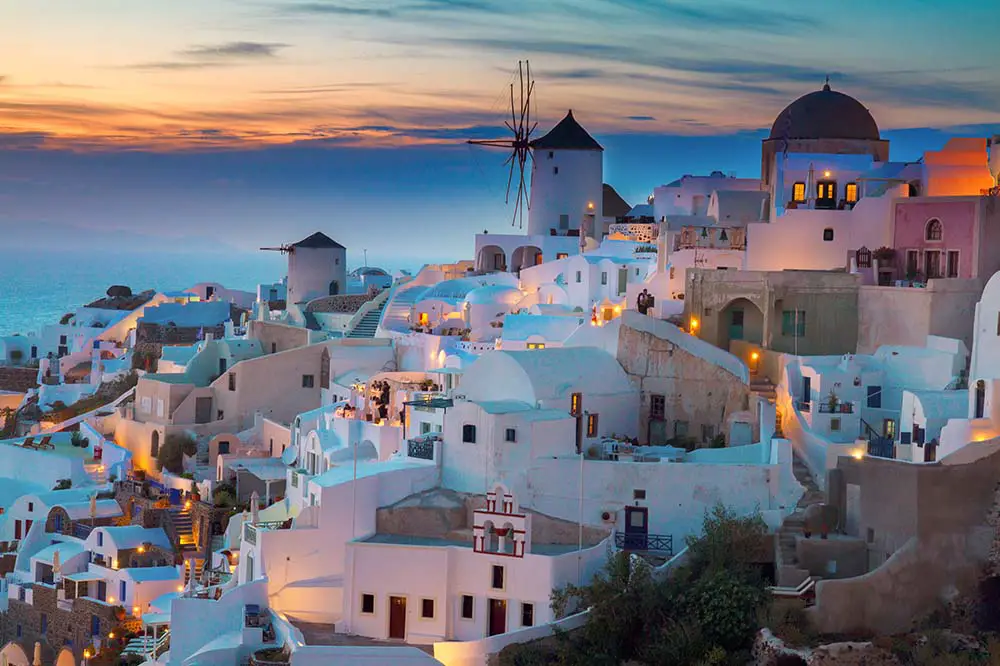
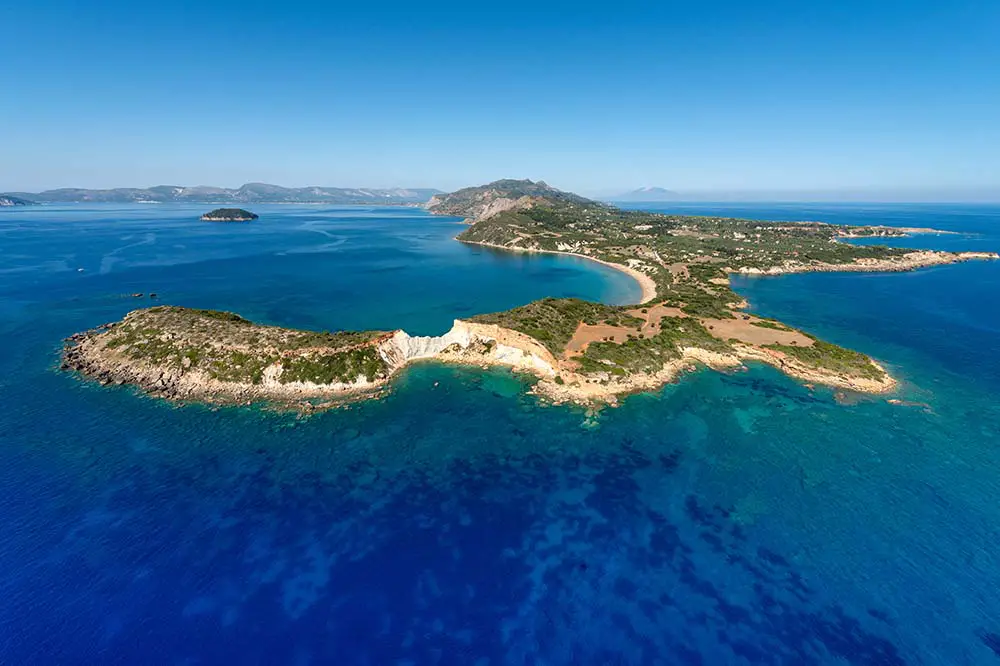
Left: Santorini / Shutterstock & Right: Kerakas Beach at Zakynthos National Marine Park / Shutterstock
The park includes a stretch of idyllic coastline which wraps around from the Cape of Marathia on the western peninsula to Gerakas Beach on the eastern peninsula and all of the water in between known as the Bay of Laganas. The park was founded to protect two species, in particular; the loggerhead sea turtle, for whom the island represents one of the most important breeding locations in the Mediterranean with up to 80% of their nest sites and the Mediterranean monk seal, which are quite large, weighing up to 315 kg (694 lbs). This species feeds mostly in shallow coastal waters and their diet can include octopuses, sardines and lobsters.
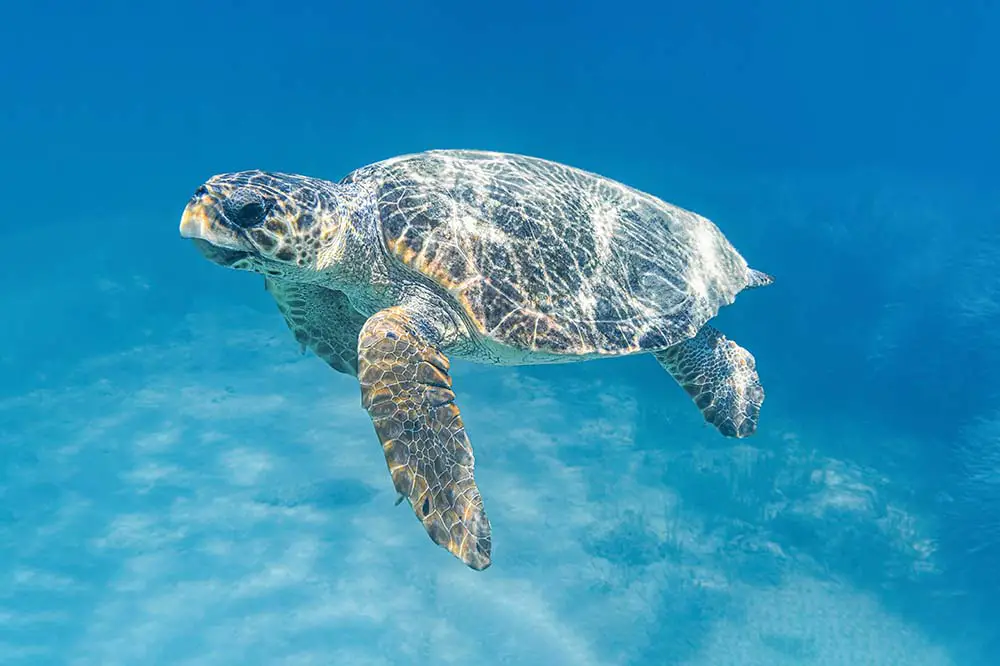
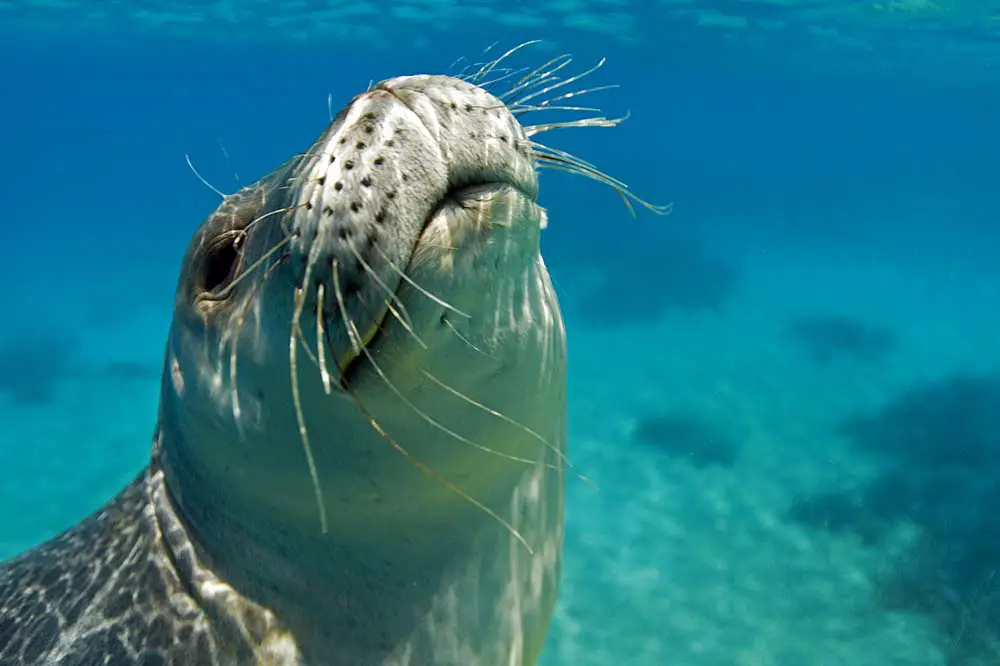
Left: Loggerhead sea turtle / Shutterstock & Right: Mediterranean monk seal / Shutterstock
Sources
Alp Facts, Triglav National Park, Travel Slovenia, Wild Russia, Seafloor Spreading, Mid Atlantic Ridge, Thingvellir National Park, Abruzzo National Park, Marsican Bear, Apennine Bear, Pollination, Lady’s Slipper Orchid, Biosphere Reserves, Askaniya Nova, Ukraine’s Serengeti, Oleshky Sands, Oleshky Sands National Nature Park, Białowieża National Park, Reindeer, Brown Bear, Finland, Oulanka, Norweigan Fjords, Jostedalsbreen, Cairngorms, Cairngorm Reindeer, De Hoge Veluwe, Veluwezoom, Veluwe, Doñana Wetland, Flamingos, Why Are Flamingos Pink, Greater Flamingo, Doñana National Park, Zakynthos Marine Park, Zakynthos, Encyclopaedia Britannica, UNESCO, Animal Diversity & Wikipedia

